| Comparison of Cherry MX Mechanical Key Switches |
|
Terminology Note: If a switch makes a noise upon generating the keystroke, that is called a "click". |
Cherry MX Low-Force (Brown Stem) Tactile Switch The Cherry MX Low-Force Tactile Switch (brown stem) is a semi-custom low force tactile design created in 1992 to Kinesis’ specifications. “Tactility” is a slightly elevated force around the midpoint of the key stroke that provides a physical and quiet audible indication that the switch is about to be activated. A tactile force curve is preferred by many ergonomic professionals as it makes the person aware, through their fingers, that activation is about to occur. This assists in developing the muscle memory at a subconscious level and through the process of motor learning. Fingers receive instructions from this memory to stop pressing down PRIOR to actuation and reduce the likelihood or incidence of "bottoming out" the switch with a hard impact. The peak (tactile) force is ~55 gm (which is still much lighter force than most conventional keyboards), followed by an activation force of ~45 gm. |
|
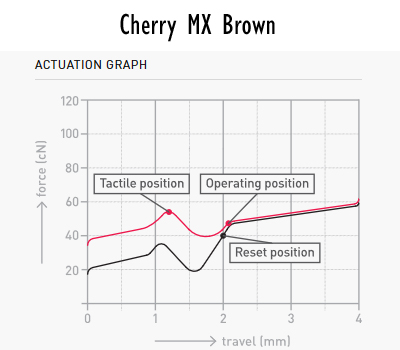 |
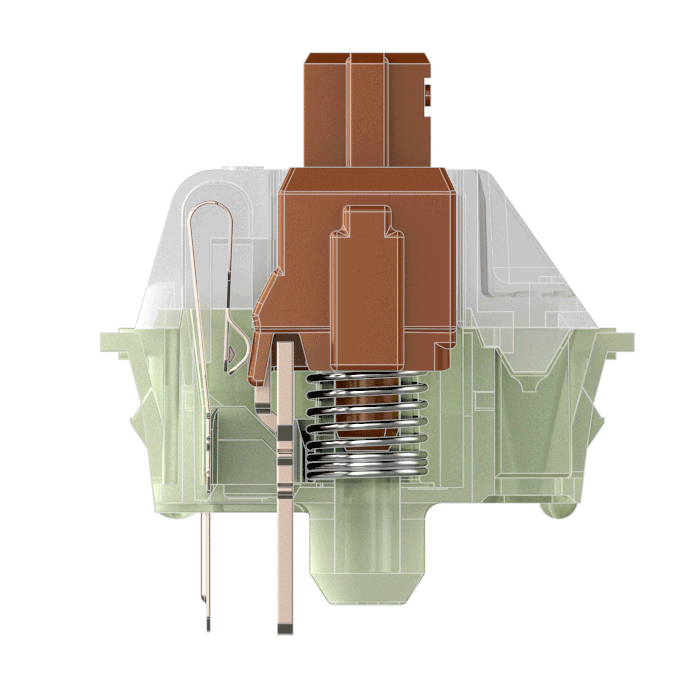 |
Cherry MX Low-force (Red Stem) Linear Feel Switch The Cherry MX Red Low-Force Linear Switch is virtually identical to the brown-stem switch except for the absence of a tactile peak. There is a consistent force throughout the full stroke of the key so there is no tactile feedback unless the switch bottoms out. Some gamers and individuals sensitive to any noise prefer the Cherry Red’s due to their smoother and quieter action. Since there is no "peak" of tactile force, the total effort required to reach the activation force of 45 gm is slightly less than with the tactile (brown stem) switch. However, the absence of tactility makes it far more difficult to create a muscle memory and know how hard to press, as the only tactile indication that is provided occurs at the end of the key travel when the key bottoms out. | |
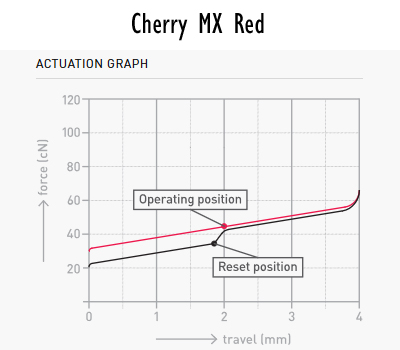 |
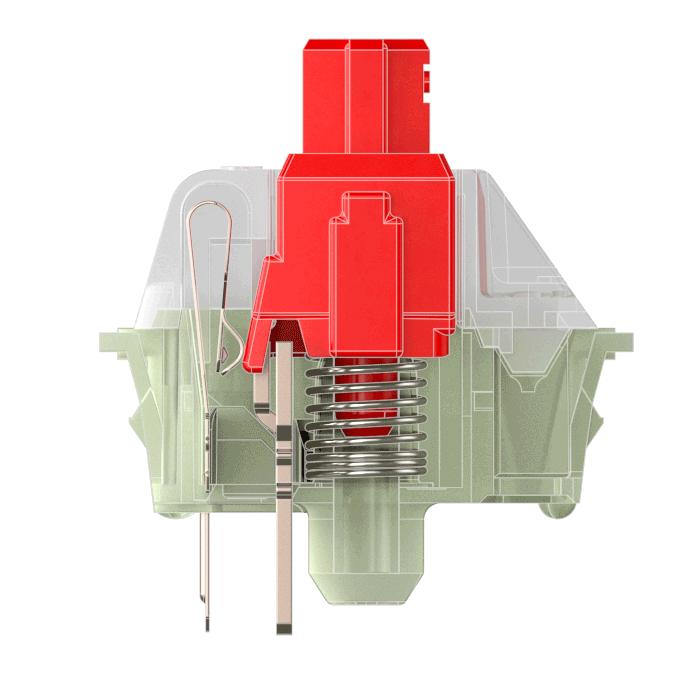 |
Cherry MX Quiet (Red Stem) Linear Feel Switch The Cherry MX Quiet Red Linear Feel Switch is virtually identical to the red-stem switch except for the addition of grey sound dampeners to the bottom of the stem. This mutes the "clack" when the key bottoms out. The switch also activates at 1.9mm (compared to 2.0 mm on the Red) and has a slightly shorter key travel distance (3.7 mm vs. 4.0 mm). There is a consistent force throughout the full stroke so there is no tactile feedback unless the switch bottoms out. People who value noise attenuation over all other considerations prefer the MX Quiet (also generously referred to by Cherry as Silent) Red. Since there is no "peak" of tactile force, the total effort required to reach the activation force of 45 gm is slightly less than with the tactile (brown stem) switch. However, the absence of tactility makes it far more difficult to create a muscle memory and know how hard to press, as the only tactile indication that is provided occurs at the end of the key travel when the key bottoms out. |
|
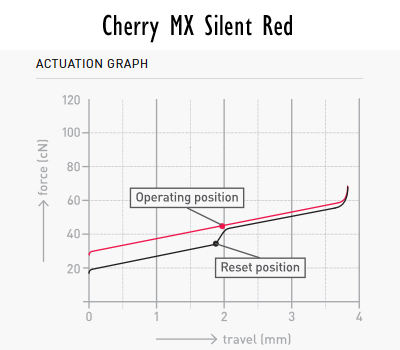 |
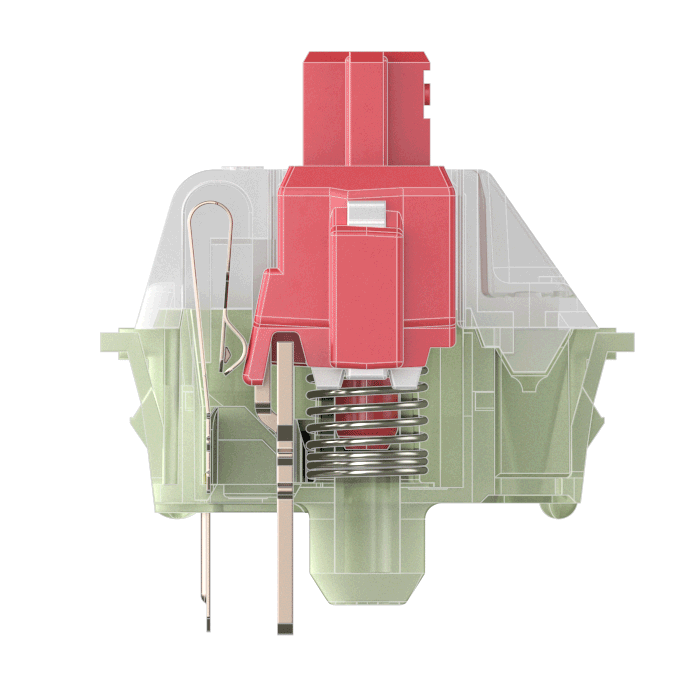 |
Cherry MX (Blue Stem) Tactile High Audible Switch The Cherry MX Blue Tactile High Audible Switch switch is virtually identical to the brown-stem switch that it has a higher peak force (60 gm vs 55 gm) and actuation force (50 gm vs 45 gm). It also has a much louder "click" associated with the tactility than the MX Brown. Users (especially gamers) who prefer a higher resistance or louder keyswitch prefer the MX Blue over the MX Brown. | |
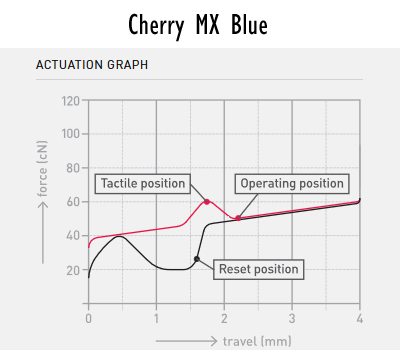 |
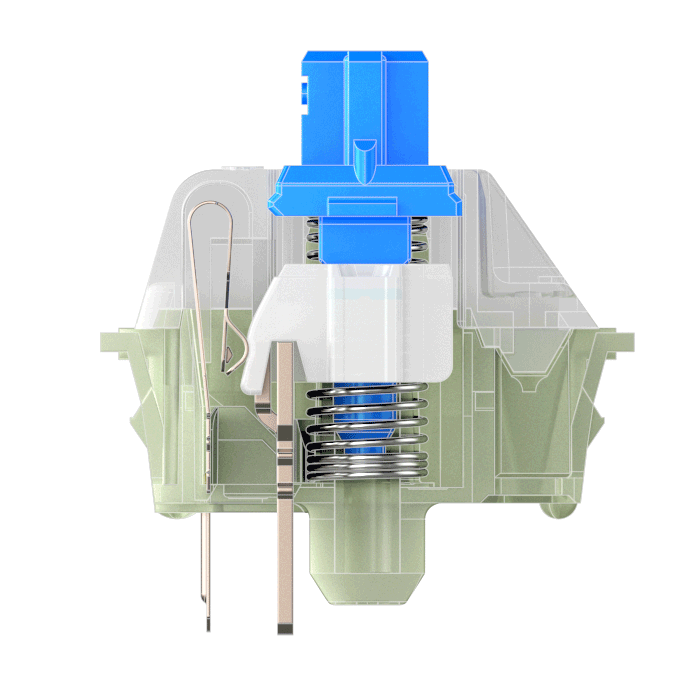 |
Cherry MX Low-force SPEED (Silver Stem) Linear Feel Switch The Cherry MX SPEED Silver Linear Feel Switch is virtually identical to the MX Red except for a significantly shorter key travel to activate the key (1.2 mm) and total key travel distance (3.4 mm). This switch was specifically designed for gaming applications as a short travel, quick rebound version of the MX Red. There is a consistent force throughout the full stroke so there is no tactile feedback unless the switch bottoms out. Some gamers and individuals sensitive to any noise prefer the Cherry Silver switches due to their smoother and quieter action. Since there is no "peak" of tactile force, the total effort required to reach the activation force of 45 gm is slightly less than with the tactile (brown stem) switch. However, the absence of tactility and shorter key travel distance makes it far more difficult to create a muscle memory and know how hard to press, as the only tactile indication that is provided occurs at the end of the key travel when the key bottoms out. | |
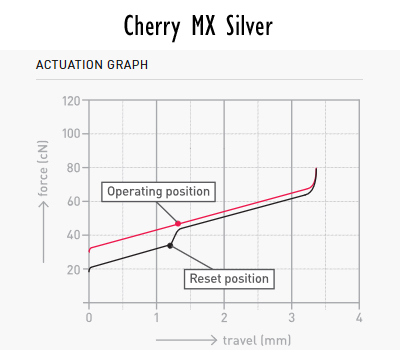 |
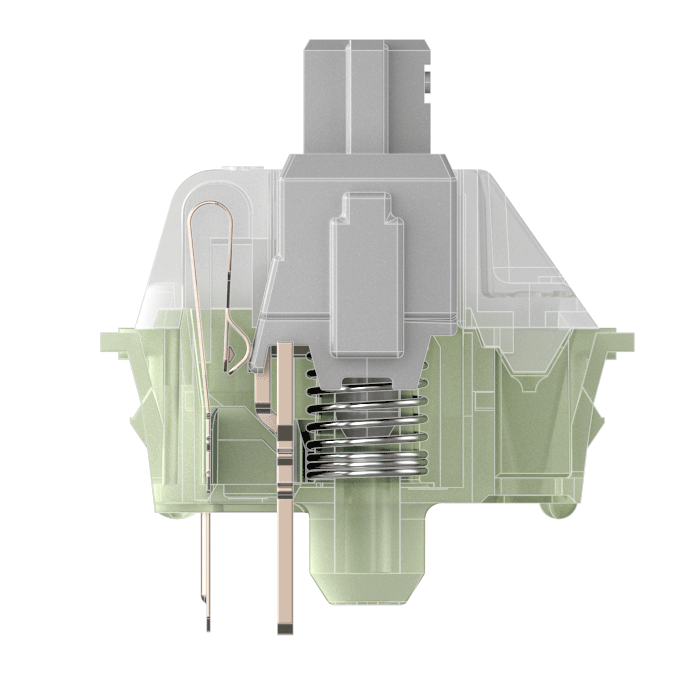 |
| * Force Graphs and Switch Animations courtesy of Cherry | |